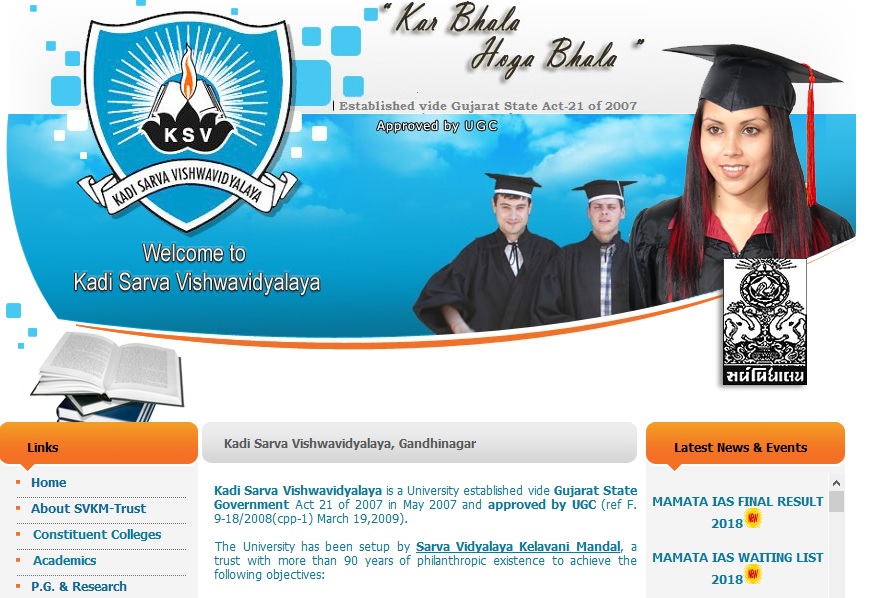Faculty Of Economics Ph.D Model Question Paper : ksvuniversity.org.in
Name of the University : Kadi Sarva Vishwavisyalaya University
Degree : Ph.D
Department : Economics
Name Of The Subject : Faculty Of Economics
Document type : Model Quetion Paper
Website : ksvuniversity.org.in
Download Model Question Papers : https://www.pdfquestion.in/uploads/5233-EconomicsPhdcourse%20work.pdf
KSV Faculty Of Economics Question Paper
Kadi Sarva Vishwa Vidyalaya
Year : 2010-11 Economics Course Content
Model Question Paper M.Marks-100
Related : Kadi Sarva Vishwavisyalaya University M.Sc IT Entrance Examination Model Question Paper : www.pdfquestion.in/5237.html
Section – A
1. Select the right choice in the questions given below [ 15 ]
Q1. The speculative demand for money depends on –
a) Interest rate
b) Income
c) Profit
d) Output

Q2. When a linear consumption function undergoes a parallel shift downwards, the investment multiplier—
a) Falls
b) Rises
c) Doubles
d) Does not change
Q3. In classical theory of employment what ensures the perfect clearing of the labour market-
a) Flexibility of interest rate
b) Flexibility of wage rate
c) Flexibility of prices of the commodity
d) Classical assumption of perfect competition in the product market
Q4. Who among the following economist introduced the concept of permanent income as a determination of consumption function-
a) M. Friedman
b) J.M Keynes
c) J.S Duesenberry
d) N.Kaldor
Q5. The quantity theory of money was first propounded by —
a) D.Ricardo
b) T.R Malthus
c) Davanzatti
d) D.Hume
Q6. In the case of an inferior commodity, the income elasticity of demand is
a) Positive
b) Unitary
c) Negative
d) Infinity
Q7. Consumers surplus if the highest in case of
a) Necessities
b) Comforts
c) Luxuries
d) Conventional necessities
Q8. Slutsky’s theory in consumption relates to
a) Income effect
b) Substitution
c) Complementary of goods
d) Both a and b
Q9. All money costs can be regarded as:
a) Social cost
b) Opportunity costs
c) Explicit costs
d) Real costs
Q10. Which is an inverted ‘U’ shaped curve—?
a) AC
b) MC
c) TC
d) FC
Q11. According to Keynes when the Great Depression, the government should have
1. Done nothing
2. Decreased money supply
3. Had a large increase in government spending
4. Enacted high tariff, such as smooth Hawley Tariff.
Q12. Which of the following is a component of M-1
1. Saving deposits
2. Credit card
3. Checkable deposits
4. Gold
Q13. Which of the following income tax is regressive?
1. The federal income tax
2. The state income tax
3. The sales tax
4. The Medicare tax
Q14. India’s Wage policy is based on
1. Cost of Living
2. Standard of Living
3. Productivity
4. None of these.
Q15. In our country which of the following affects poverty line the most.
1. Level of prices
2. Production quantum
3. Per capita income
4. Quantum of gold resources
Section – B
II. Fill the blanks : [5]
Q1. ______ refers to a period when______ decreases
1. Recession, Growth rate of nominal GDP
2. Recession, Growth rate of output per person
3. Productivity growth slowdown growth rate of real GDP
4. Productivity growth slowdown, growth rate of output per person
Q2. Tax cuts tent to______ domestic Investment and ____net exports.
1. reduce, reduce
2. reduce, increase
3. increase, reduce
4. increase, increase
Q3. ________ deals with the description and explanation of the economic behavior of the individuals and firms
1. Positive economics
2. Normative economics
3. Macro economics
4. Micro economics
Q4. Demand is not ______ term it is ______concept
1. an absolute, a relative
2. a relative, an absolute
3. a short term, a long term
4. a long, a short term
Q5. Total utility is maximum when marginal utility is :
1. Zero
2. Its Highest point
3. Equal to average utility
4. Average utility is maximum.
Section – C
III. Very Short questions : [30]
1. Define Demographic Transition.
2. State Friedman’s Quantity theory.
3. What is Autonomous Investment?
4. What does budget line indicate?
5. What are the assets of Commercial Bank?
6. Variable Proportion theory
7. Define Balance Of Payment.
8. Features of monopolistic competition
9. Product method for estimating national income
10. Cross elasticity of demand.
Section – D
IV. Short questions : [20]
1. Explain the price elasticity with its types.
2. Explain the law of diminishing marginal utility.
3. Explain the revealed preference theory of demand.
4. Explain the AC and MC relationship.
5. Explain the Law of returns to scale theory.
Section – E
V. Long Questions : [30]
1. Explain the Keynesian psychological law of Consumption.
2. Explain the Marginal efficiency of capital with the factors affecting it.
3. Explain the quantity theory of money given by Friedman.
4. Explain the short run and long run equilibrium of a firm under perfect competition.
5. Explain the credit creation process of commercial bank.